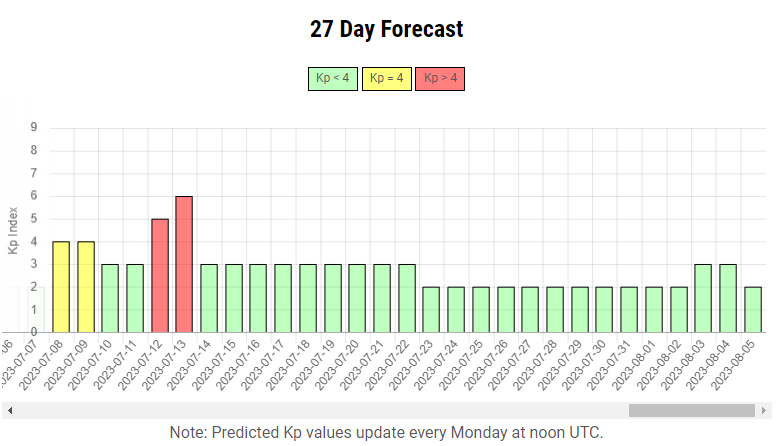The University of Alaska Fairbanks has just predicted a massive upcoming solar storm this week that could make the northern lights will be visible in North Carolina.
During a geomagnetic storm, high solar winds from a coronal hole trigger coronal mass ejections (CMEs), launching plasma and parts of the sun’s magnetic field into the atmosphere. These CMEs typically take several days to reach Earth, but the most intense storms can arrive in as little as 18 hours, according to NOAA’s Space Weather Prediction Center.
The resulting auroras occur when strong solar disturbances pull and then release Earth’s magnetic field, creating ripples known as Alfvén waves. These waves accelerate electrons towards Earth at speeds of up to 45 million mph, producing the beautiful auroral displays.
The Geophysical Institute is now forecasting rare KP-6 for the night of July 13:
The Northern Lights were last seen in North Carolina this past March.
Evan Fisher, a meteorology major at the University of North Carolina-Asheville, captured the mesmerizing sight in a stunning photograph, showcasing the vivid colors that swept across the sky, although he notes in his tweet that he left just before some of his students captured even more spectacular photos of the event.
Said unfortunate event: pic.twitter.com/BiTAxAGked
— Evan Fisher (@EFisherWX) April 24, 2023
Although March’s light show over Asheville didn’t compare to what those in more northern latitudes witnessed:
Aurora Borealis as seen from near Calgary, Canada last night!
Wonderful colours and motion out there. #AuroraBorealis #northernlights #yyc pic.twitter.com/1kPjPzlvoh
— Kyle Brittain (@KyleBrittainWX) March 24, 2023
Have you ever seen the Aurora before?



